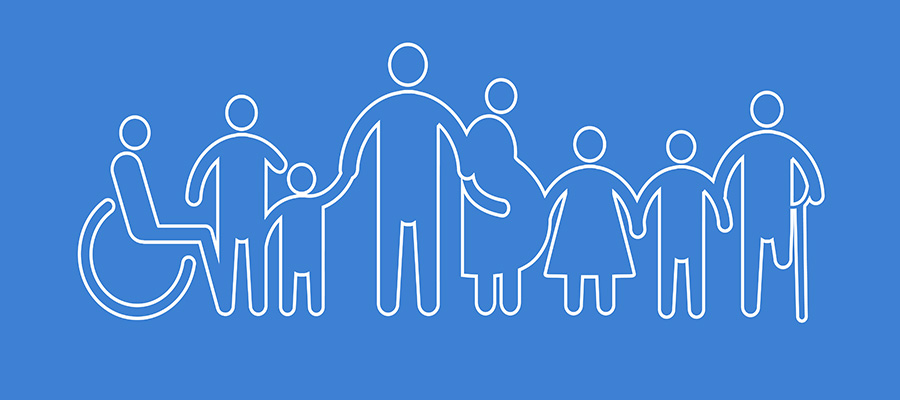Have you ever been in a learning situation where the information wasn’t easily available, where the steps required to get to the next knowledge bite were annoyingly complex? Or do you recall the experience of dread walking to your classes? Now multiply that by ten or twenty, and you’ll get a small taste of what a person in a disability situation experiences day by day, at the hands of poor design in a learning or any other context.
Universal design, or sometimes referred to as inclusive design, is a way of making sure that anyone can find products or services easily accessible. And, by every means possible, learning fits in there as well. Often, this type of design benefits not only the people in a disability situation but everyone, by creating solutions that surpass the first obvious answers and force the creative process to search for ways of pushing the limits a bit further. Check this TED talk that explains it better, from the perspective of someone in a disability situation.
From a learning perspective, most universities favor three best practices regarding Universal Design, as first defined by David H. Rose, Ed.D. of the Harvard Graduate School of Education and the Center for Applied Special Technology, and they are:
- Representation
This means a variety of methods are used to present the course content (audio, lectures, text, online content, etc.). Alternatives are recommended to be offered for every delivery method. For example, any visual information should be paired with auditory information or at least a design that would be clearly interpreted by different read-out-loud software. - Engagement
Through this instructional designers provide multiple ways of engaging the students (discussions, individual projects, collaborative tools or assignments, etc.). - Expression
Instructors allow students to demonstrate their knowledge in different ways, depending on the barriers they might face (written essay instead of an oral presentation, for example, for those having a speech impairment).
The main goal of the Universal Design for Learning is to increase access to learning by reducing physical, cognitive or intellectual barriers to learning (not limited to these barriers only). In other words, curriculum development should consider giving all individuals equal opportunities to learn.
For an extensive repertoire of tips and strategies I recommend two excellent resources: http://www.udlcenter.org and http://www.cast.org/
Also, if you’re in the Montreal area, I recommend you to contact the staff at Concordia’s Access Centre for Students with Disabilities for their excellent multitude of great resources.





